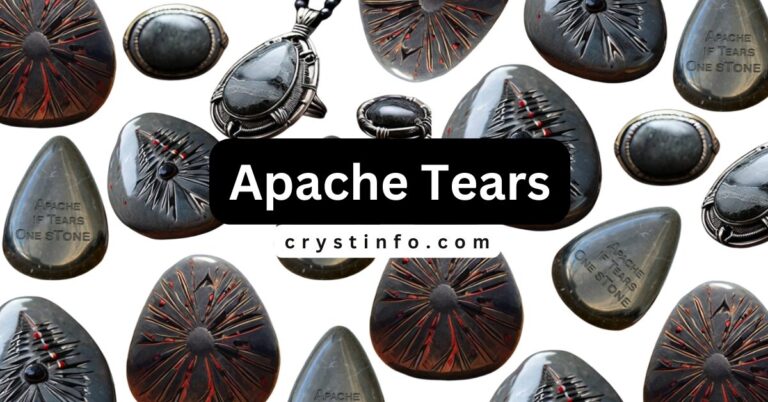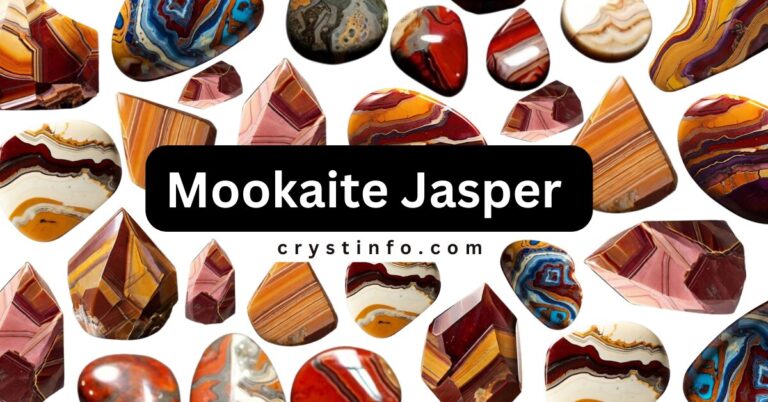Opalite Gemstone: Unveiling Properties, Meanings, and [Hidden Insights]
What Is Opalite?
Opalite, sometimes referred to as the “Stone of Eternity,” is a popular crystal prized for its calming and entrancing appearance. This gemstone is a glass made by humans that is intended to mimic the ethereal glow of opals, despite not being a byproduct of natural geological processes. Many people believe that this gemstone has different spiritual and emotional benefits, even though it is a synthetic substance.

Tranquil Energy and Stress Relief
- Tranquil Energy:
- Renowned for its tranquil energy, this gemstone is valued by those seeking relief from anxiety and stress.
- Its gentle and nurturing vibes are believed to foster inner peace and emotional equilibrium.
- Alleviating Tension:
- Holding or wearing this gemstone is thought to alleviate tension, promoting a sense of tranquility and relaxation in daily life.
Communication and Self-Expression:
- Enhancing Communication:
- This gemstone is linked to the enhancement of communication and self-expression.
- Stimulates the throat chakra, aiding in open dialogue and clear communication.
- Versatile Applications:
- Valuable for individuals aiming to improve interpersonal relationships, public speaking skills, or artistic pursuits.
Spiritual Exploration and Transformation:
- Catalyst for Spiritual Awakening:
- In the realm of spiritual exploration, this gemstone is considered a catalyst for spiritual awakening and transformation.
- Its iridescent glow symbolizes transitions and personal growth.
- Meditative Use:
- During meditation, this gemstone can be utilized to connect with one’s higher self.
- Provides insights into life’s challenges and opportunities.
This gemstone , with its calming energy and associations with communication and spiritual growth, serves as a versatile crystal for individuals seeking relief from stress, improvement in interpersonal skills, and a deeper connection with their higher selves.
- This gemstone is an artificial crystal designed to replicate the appearance of natural opal, the October birthstone formed from volcanic ash.
- It is composed of a mixture of glass and metal, and some manufacturers may include plastic resin and other elements in its composition.
- The typical color of opalite is a pearlescent blue, but it is available in various colors.
- This gemstone is known for its lustrous play-of-color, creating the illusion of a glowing phosphorescence.
- Interestingly, the brilliance of this gemstone often exceeds that of natural opal.
- This gemstone is recognized for its vibrant and captivating aesthetic, making it a popular choice for jewelry and decorative items.
Although the word “opalites” originally referred to a particular kind of natural opal, since the 1980s it has come to refer to artificial opalite crystal. Known by various titles like purple opal, ice-cream stone, opalized fluorite, this gemstone crystal, and common opal, this crystal never fails to enthrall with its distinct and sparkling features.
History:
Natural opal dates back millions of years, with its origins thought to have occurred about 20 million years ago. The oldest known opal artifacts were discovered in Kenya and date to approximately 4000 BC.
- 1945: First Appearance in Literature:
- The term “opalites” first appeared in literature in 1945.
- Initially defined in gemological and geological glossaries as a synonym for common opal, referring to any opal lacking play-of-color.
- 1972: Breakthrough by Pierre Gilson:
- A pivotal moment occurred in opal history when French chemist Pierre Gilson successfully produced the first synthetic opal in 1972.
- Two years later, in 1974, Gilson introduced his synthetic opal to the market.
- 1960s Research by Australian Scientists:
- Gilson’s achievement was built upon internal structure research conducted in the 1960s by Australian scientists P.J. Darragh and J.V. Sanders.
- 1980: Sale to Japanese Company:
- In 1980, the design and equipment for the synthetic opal, initially named “Gilson Synthetic Opal,” were sold to a Japanese company.
- This marked the beginning of wider production and distribution of synthetic opal.
- This gemstone as a Descriptor for Synthetic Opal:
- As the market for synthetic opal expanded, the term “opalites” gained prominence as a descriptor specifically for synthetic opal.
- It is commonly used to distinguish synthetic opals from natural opals in the gem and jewelry industry.
It should be made clear that Gilson’s synthetic opal is not the same as artificial gemstone . Whereas artificial this gemstone is made of glass or plastic, Gilson’s stones are mainly made of silica. Still, Gilson’s groundbreaking research helped to make synthetic this gemstone increasingly popular.
Meaning:

This gemstone is a potent symbol of metamorphosis, emotional balance, and spiritual advancement. It creates a link to the worlds of magic and spiritual growth with its ethereal appearance, which is reminiscent of the moon’s soft glow.
Origin of the Name:
- Resemblance to Natural Opal:
- The name “Opal” is derived from its striking resemblance to natural Opal.
- Natural Opal is renowned for its captivating play of color and light.
- Artificial Gemstone with Spiritual Significance:
- Despite being an artificial gemstone, this gemstone retains spiritual significance.
- Believed that its creation process infuses it with the beauty and energy of the natural world.
Crystal Healing Symbolism:
- Symbol of Youthful Optimism:
- This gemstone symbolizes youthful optimism, playfulness, and resilience.
- Predominant blue and white hues are associated with peace, tranquility, and purity.
Comprehensive Healing Properties:
- Enhancement of Sexual Experience:
- This gemstone is revered for enhancing the sexual experience and promoting sexual prowess.
- Stabilizing Mood Swings:
- Beyond sensual attributes, this gemstone is believed to stabilize mood swings and alleviate fatigue.
- Emotional Navigation:
- Emotionally, this gemstone aids in navigating transitions and fostering persistence.
- Empowers the expression of hidden feelings.
Professional Influence:
- Business Stone:
- This gemstone is considered a business stone that encourages success in various endeavors.
Overall Influence:
- This gemstone is recognized as a comprehensive healing stone with influences on the physical, emotional, and professional aspects of life.
- Its creation process is believed to imbue it with both aesthetic beauty and spiritual energy.
This gemstone symbolism and healing properties make it a versatile and valued gemstone, appreciated not only for its aesthetic resemblance to natural Opal but also for its perceived spiritual and holistic benefits.
| Property | Description |
|---|---|
| Name | Opalite |
| Composition | A man-made, opalescent glass often used as an imitation for opals. It does not have a natural mineral composition. |
| Color | Milky or translucent with an opalescent sheen. |
| Crystal System | Amorphous (no crystalline structure) |
| Hardness | Variable, typically around 5.5 – 6 on the Mohs scale |
| Luster | Glassy |
| Transparency | Translucent to transparent |
| Cleavage | Absent |
| Fracture | Conchoidal to uneven |
| Specific Gravity | 1.47 – 1.48 |
| Streak | White |
| Occurrence | Man-made; created to mimic the appearance of natural opals. |
| Uses | – Gemstone Use: Used in jewelry as beads, cabochons, and carvings. |
| – Ornamental Use: Popular for decorative items and as a substitute for more expensive opals. | |
| – Metaphysical Beliefs: Associated with calming energy and emotional balance. |
Hardness:
Gravity:
This gemstone is a man-made material that mimics the appearance of natural opals. It is often used in jewelry and ornamental items. While it lacks the geological properties of natural opals, it is appreciated for its opalescent sheen and is sometimes associated with metaphysical properties related to calming energy and emotional balance. Specific details about this gemstone may vary, and consulting reputable sources is advisable for comprehensive information.
Types:
Natural gemstone :
- Not Always Man-Made:
- This gemstone is not always man-made; natural gemstone exists.
- This gemstone is a variety of common opal, which is abundant worldwide.
- Type of Opal:
- Natural gemstone belongs to the category of common opal, which does not exhibit play-of-color like precious opals.
- Play-of-Color Absence:
- Unlike precious opals, this gemstone , being a common opal, does not show play-of-color.
- Faceting and Appearance:
- It is not common for natural gemstone to be faceted.
- Some specimens may have a pearly luster and creamy color, making them suitable for gemstone jewelry.
- Market Terminology:
- On the market, natural gemstone is often advertised and sold under the name “common opal.”
Natural gemstone , classified as a type of common opal, may lack the vibrant play-of-color seen in precious opals. However, its unique appearance, including a pearly luster and creamy color, makes it a distinctive choice for gemstone jewelry, and it is sometimes marketed under the term “common opal.”
Man-Made gemstone :
- Composition:
- Man-made gemstone is primarily composed of dolomite, glass resin, and/or metal.
- It often comes in blue and purple light tones.
- Affordability and Accessibility:
- Man-made gemstone is created to make the aesthetic appeal of opal more accessible.
- The goal is to provide an affordable, man-made alternative that imitates the appearance of natural opal.
- Not Rare:
- Man-made gemstone is not rare at all.
- Its production is intended to offer a more readily available and budget-friendly option compared to natural opals.
- Market Presence:
- On the market, man-made gemstone is commonly advertised and sold simply as “opal.”
- There is often no explicit indication that it is man-made, potentially leading to confusion with natural gemstone .
- Aesthetic Imitation:
- The purpose of man-made gemstone is to imitate the aesthetic qualities of natural opals.
- It provides an alternative for those who appreciate the look of opals but seek a more affordable option.
Man-made gemstone , created for affordability and accessibility, is a popular alternative in the market. Its composition often includes dolomite, glass resin, and/or metal, and it is commonly sold without explicitly specifying that it is man-made, potentially leading consumers to assume it is a natural gemstone.
Benefits:
| Benefit | Description |
|---|---|
| 1. Calming Energy | This gemstone is known for soothing and calming the mind, reducing stress, anxiety, and emotional turmoil to promote tranquility. |
| 2. Emotional Balance | Believed to assist in balancing emotions by fostering a deeper connection with one’s inner self, encouraging self-acceptance and managing mood swings. |
| 3. Communication Enhancement | Associated with the throat chakra, this gemstone is thought to improve communication skills and self-expression, aiding in articulating thoughts and feelings effectively. |
| 4. Spiritual Awakening | Considered a stone of spiritual growth, this gemstone is believed to facilitate a deeper connection with higher consciousness, aiding in exploring one’s spiritual path and seeking enlightenment. |
| 5. Intuition Amplification | This gemstone is said to enhance intuition and psychic abilities, helping individuals tune into their inner wisdom and making it a valuable tool for intuitive practices. |
| 6. Removing Energetic Blockages | Believed to assist in removing energetic blockages within the body’s energy centers, allowing for a smoother flow of energy. |
| 7. Enhancing Relationships | This gemstone calming energy may contribute to harmonious relationships by reducing conflicts, promoting understanding, and encouraging empathy and open-hearted communication. |
| 8. Dream Clarity | Placing this gemstone under a pillow or near the bedside is thought to enhance dream clarity and facilitate dream recall, providing insights into the subconscious mind. |
| 9. Creativity Boost | This gemstone energy is said to stimulate creativity and artistic expression, helping individuals overcome creative blocks and explore new ideas. |
| 10. Serenity and Inner Peace | This gemstone serene appearance is associated with inner peace, creating a harmonious environment that encourages mindfulness and a sense of contentment. |
It’s important to note that the perceived benefits of this gemstone can vary among individuals, and the use of crystals is often rooted in personal beliefs and experiences.
Metaphysical Properties and Benefits:
- Higher Chakra Resonance:
- This gemstone blue, purple, and pink colors resonate with the higher chakras.
- Associated with intuition, spiritual connection, and higher consciousness.
- Enhancement of Psychic Abilities:
- Working with this gemstone can enhance psychic abilities and spiritual growth.
- Provides access to inner wisdom.
- Elemental Connection:
- Connected to the Water element, this gemstone embodies the ebb and flow of life.
- Reflects the ever-changing nature of emotions and experiences.
- Soothing Energy:
- This gemstone soothing energy fosters emotional balance.
- Assists in navigating life’s currents, similar to a serene lagoon.
- Moon Ruled Energies:
- Ruled by the Moon, this gemstone draws upon lunar energies.
- Amplifies intuition, sensitivity, and emotional understanding.
- Radiant Glow and Guidance:
- This gemstone radiant glow mirrors the Moon’s embrace, illuminating your path.
- Guides you through life’s transitions.
- Emotional Well-Being:
- Nurtures emotional well-being and strengthens the connection to home and family.
- Support for Cancerian Traits:
- Supports Cancerian traits like empathy, loyalty, and sensitivity.
- Instills a sense of belonging and promotes harmonious relationships.
- Feng Shui Placement:
- In feng shui, placing this gemstone in the Northeast sector enhances personal growth, spiritual development, and knowledge.
- Invites wisdom and enlightenment into one’s life.
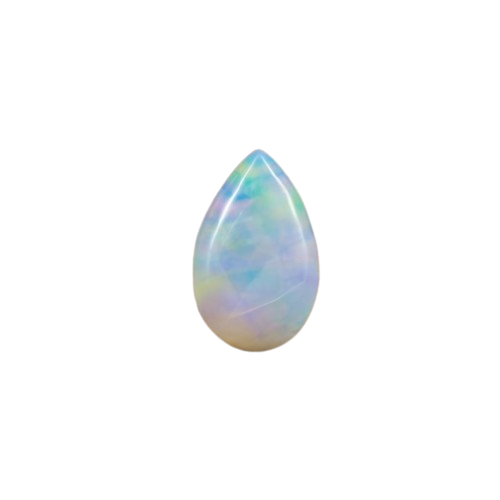
This gemstone , with its vibrant colors and connection to higher chakras, is associated with enhancing intuition, emotional balance, and spiritual growth. Its lunar energies and soothing properties make it a beneficial crystal for navigating life’s transitions and promoting harmonious relationships, especially when placed strategically in feng shui practices.
Healing Properties and Benefits:
Although the stone is man-made, the materials that make up this gemstone are not entirely synthetic. Glass is made from sand, and resin is derived from plants. Additionally, the two materials have ancient spiritual significance and are said to have healing properties.
Certainly! Here’s a table summarizing the benefits of this gemstone in various aspects:
| Aspect | Uses | Instructions |
|---|---|---|
| Personal Growth | Releases old habits and encourages self-improvement. Invites spiritual, mental, and emotional growth. | Meditate with this gemstone on the Third Eye or Crown Chakra, envisioning goals and steps for achievement. |
| Creativity | Stimulates creative thinking and the free flow of ideas. Ideal for artists and writers. | Place this gemstone in your workspace or hold it while brainstorming new ideas or working on creative projects. |
| Emotional Healing | Balances emotions, alleviates anxiety, stress, and depression. Invites positive feelings. | Wear this gemstone as a pendant or carry it in your pocket to absorb calming energy throughout the day. |
| Self-Discovery | Connects to the higher self, revealing hidden truths. Promotes self-discovery. | Meditate with this gemstone on the forehead or the top of the head to connect with desires and create a life aligned with needs. |
| Emotional Balance | Stabilizes emotions, helps maintain a balanced state of mind. | Create a crystal grid with this gemstone at the center, surrounded by calming stones like Amethyst or Rose Quartz. Meditate in the grid’s energy field. |
Spiritual Properties and Benefits:
| Aspect | Uses | Instructions |
|---|---|---|
| Mediumship | Enhances psychic abilities and opens channels of communication with the spirit world. | Hold this gemstone in your hand or place it on the Third Eye Chakra while meditating to invite guidance and messages from higher realms. |
| Transformation | Symbolizes transformation and change, assisting in embracing new beginnings and releasing old patterns. | Meditate with this gemstone or wear it as jewelry, setting intentions for the changes you wish to manifest. |
| Spiritual Awakening | Stimulates the Third Eye and Crown Chakras, a powerful tool for spiritual awakening. | Place this gemstone on the forehead or the top of the head during meditation or prayer to allow its energy to guide you toward a greater understanding of your spiritual purpose. |
| Astral Travel | Facilitates astral travel and lucid dreaming by expanding consciousness and enhancing psychic abilities. | Place this gemstone under your pillow or on your bedside table before sleep, setting intentions for a guided astral journey. |
| Energy Clearing | Gently clears negative energies and promotes spiritual purification. | Hold this gemstone in your hand, visualize its soothing energy washing away negativity, and restoring balance. |
Quality Factors:
Understanding the factors that contribute to a gem’s value when selecting this gemstone jewelry or stones can give you peace of mind when making your purchase. Color, clarity, and cut are some of the variables that determine the value of opalite gemstones, both natural and synthetic.
| Quality Factor | Natural gemstone | Synthetic gemstone |
|---|---|---|
| Color | Typically mossy-green, lavender, or purple. Dark inclusions may be black, gray, or bluish-black, appearing as veins or dendritic patterns. | Colors change based on backgrounds; light blue against white results in peach-pink or orange against a dark background. |
| Clarity | Heavily included; clarity grades less important; translucent specimens may command slightly higher prices than opaque ones. | Generally no internal flaws, great clarity; air bubbles in glass opalite may lower the stone’s value if present. |
| Cut | Cut into various cabochon shapes (ovals, rectangles), tumbled stones, and raw this gemstone slabs; used in jewelry settings. Cat’s eye this gemstone is popular for rings. | Almost always tumbled, cut as cabochons, or beads. |
These factors help in evaluating and understanding the characteristics that contribute to the quality and value of both natural and synthetic this gemstone .
Side Effects:
| Side Effect | Description |
|---|---|
| Overstimulation | This gemstone connection to higher chakras may lead to overstimulation, resulting in restlessness or difficulty sleeping for some individuals. |
| Emotional Sensitivity | The stone’s ability to balance emotions and promote emotional healing may cause heightened emotional sensitivity or intensified feelings in some people. |
| Overwhelmed by Psychic Abilities | This gemstone amplification of psychic gifts may lead to feeling overwhelmed or unprepared for increased intuitive experiences. |
| Energy Imbalances | Despite being a balancing stone, some individuals might experience temporary energy imbalances as their body adjusts to this gemstone energy. |
Formation:
- Composition of Man-Made gemstone :
- Most man-made gemstone is crafted from glass.
- The glass composition often includes dolomite and metal to replicate the volcanic conditions that form natural opal.
- Glass-Making Process:
- The process begins with melting raw materials, including dolomite and metal, to create a liquid mixture.
- The mixture is then allowed to cool and solidify, forming this gemstone glass.
- Dolomite’s Role in Glass gemstone :
- Dolomite is a crucial component in this gemstone glass, as it maintains a viscous texture during the melting process.
- It also provides protection against scratches, enhancing the durability of the resulting this gemstone .
Natural this gemstone Formation:
- Formation Similar to Natural Opal:
- Natural gemstone forms in a manner similar to other types of opal.
- Underground Formation Process:
- Water seeps down into cracks and crevices underground, collecting silica spheres along its journey.
- Evaporation and Formation:
- Most of the water evaporates, leaving behind beautiful this gemstone formations.
- Color and Inclusions:
- The size and proximity of silica spheres contribute to the stone’s green color.
- Dark inclusions, such as those from minerals like moss agate present during formation, add character to this gemstone .
- Cat’s Eye Effect:
- In cases wherethis gemstone exhibits a cat’s eye effect, it indicates that the silica spheres have taken a pyramid shape, creating a distinctive visual effect.
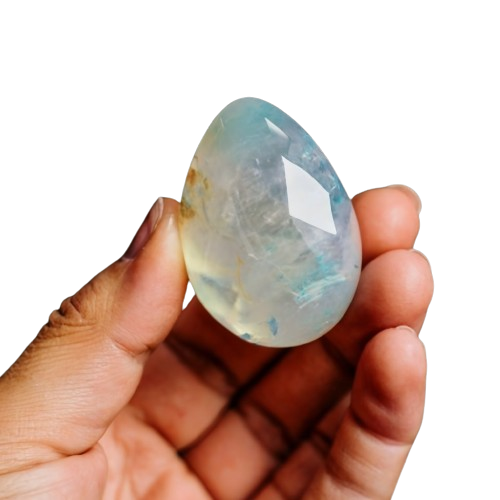
Understanding the composition and formation processes, whether for man-made gemstone or its natural counterpart, provides insights into the unique characteristics and properties of this captivating gemstone.
Origin:
| Type | Main Sources |
|---|---|
| Synthetic gemstone | Australia, New Zealand, Turkey, US states of Arizona, Georgia, California. |
| Natural gemstone | Australia, Brazil, Canada, Iceland, Mexico, Peru, Slovakia, Tanzania, USA, United Kingdom. |
| Natural Cat’s Eye this gemstone | Africa (Ethiopia, Tanzania) – Ethiopian cat’s eye opalite may have silver and pink undertones. |
Regarding price expectations, this gemstone prices can vary based on factors such as color, clarity, cut, and size. It’s important to note that natural gemstone with unique and desirable characteristics may command higher prices.
Value:
| Type | Wholesale Prices (Per Carat) |
|---|---|
| Welo | $8-$20, with some reaching $65 |
| Ethiopian | $0.60-$1 |
| Cat’s-Eye | $1-$4 |
Additionally, here are prices for synthetic gemstone sold by type:
| Type of Synthetic | Wholesale Prices (Ranges) |
|---|---|
| Tumbled Stones | $1-$3 |
| Crafted Items (Necklaces, Points, etc.) | $2-$25, depending on size and craftsmanship |
Chakra:
Chakra Associations:
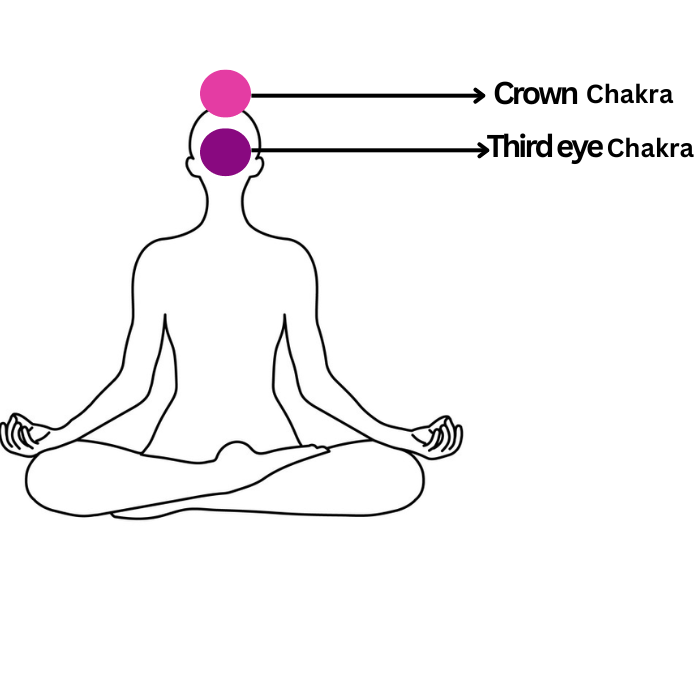
- Crown Chakra Connection:
- This gemstone is primarily associated with the crown chakra.
- Third Eye Chakra Connection:
- The crystal is also linked to the third eye chakra.
- Strengthens self-understanding and clarifies perceptions of the external world.
- Enhances self-insight, intuition, and psychic abilities through its connection with the crown chakra.
Color Influence on Chakra Connections:
- Color-Specific Chakra Influences:
- The color of this gemstone influences its chakra connections.
- Blue opalite associates with the throat chakra.
- Green gemstone associates with the heart chakra.
General Chakra Benefits:
- Clearing Blockages:
- This gemstone is a powerful stone for clearing blockages in the chakras and meridians.
- Balancing Feminine and Masculine Energies:
- Frequently used to balance feminine and masculine energies.
Understanding the chakra associations of this gemstone , influenced by its color, allows individuals to harness its energy for specific purposes such as enhancing intuition, promoting clear communication, and fostering love and warmth. Additionally, opalite’s general benefits make it a versatile tool for chakra work and energy balancing.
How to Clean & Charge?
| Method | Cleansing Steps | Charging Steps |
|---|---|---|
| Quartz/Amethyst Container | Place this gemstone in a container with quartz or amethyst overnight. Geodes, druses, beds, and clusters are suitable. | Expose this gemstone to sunlight or moonlight after cleansing, or simply touch it with your own body. |
| Smudging | Hold this gemstone in the smoke of burning sage or palo santo during meditation. | N/A (Charging often occurs simultaneously with cleansing through smudging). |
| Moonlight Exposure | Place this gemstone under the Full Moon’s light, recite positive affirmations. | Expose this gemstone to moonlight after cleansing for additional energetic charging. |
| Sound Cleansing | Place this gemstone next to a bell or singing bowl. Play the bell or bowl for at least 2 minutes to let sound cleanse the stone. | N/A (Sound cleansing is primarily for purifying energy rather than charging). |
It’s important to note that individuals may have personal preferences for cleansing and charging methods, and the effectiveness can vary based on personal beliefs and practices. Choose the method that resonates with you and aligns with your spiritual or energetic preferences.
Conclusion:
This gemstone is a mesmerizing gemstone admired for its ethereal beauty and believed metaphysical properties. Whether worn as jewelry or used in holistic practices, its radiant glow and alleged ability to promote emotional balance and intuition make it a captivating choice. While scientific evidence may be limited, Opalite’s charm and cultural significance invite exploration into the intriguing interplay of beauty and spirituality. Ultimately, this gemstone stands as a radiant example of nature’s ability to inspire awe across both aesthetic and metaphysical realms.
FAQs:
- What is Opalite?
- This gemstone is a synthetic glass with an opalescent quality, often used as a gemstone in jewelry.
- What gives this gemstone its unique glow?
- The opalescent sheen of this gemstone is created through the addition of certain minerals and metals during the manufacturing process.
- Are there any scientific studies supporting Opalite’s metaphysical properties?
- Scientific evidence supporting Opalite’s alleged metaphysical properties is limited. Many beliefs are rooted in cultural and spiritual traditions rather than empirical research.
- How this gemstone used in holistic practices?
- This gemstone is believed by some to promote emotional balance, positive energy, and heightened intuition. It is commonly used in meditation and as a tool for enhancing communication skills.
- Can this gemstone be worn every day?
- Yes, this gemstone is durable and suitable for daily wear. However, like any gemstone, it should be treated with care to maintain its appearance.
- Does this gemstone have any cultural significance?
- This gemstone has cultural significance in various spiritual practices. It is often associated with themes of inspiration, intuition, and beauty.
- Is this gemstone a natural gemstone?
- No, this gemstone is a man-made gemstone. It is created to mimic the appearance of natural opals and is valued for its consistent color and affordability.

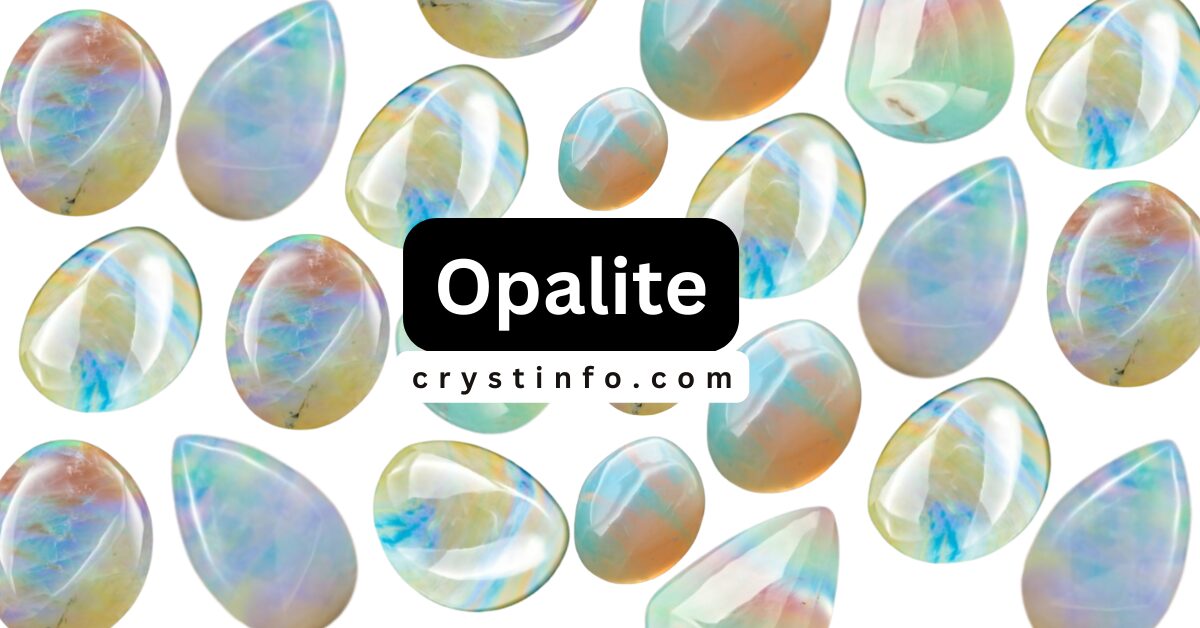
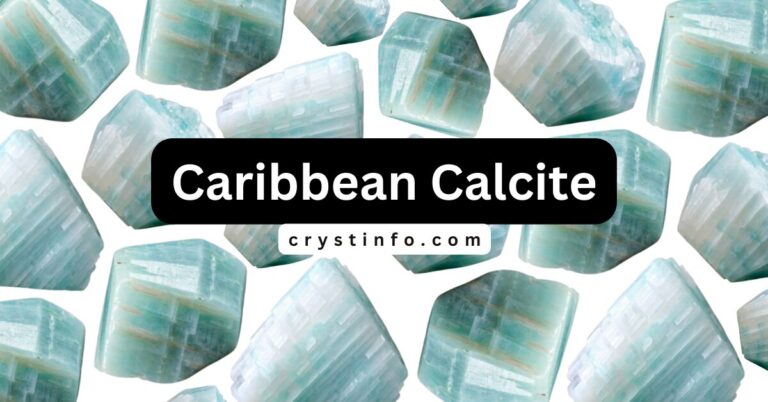
![Obsidian: Discover Healing Wonders,Types and Benefits [Guide]](https://crystinfoz.com/wp-content/uploads/2023/12/Add-a-heading-11-768x402.jpg)

